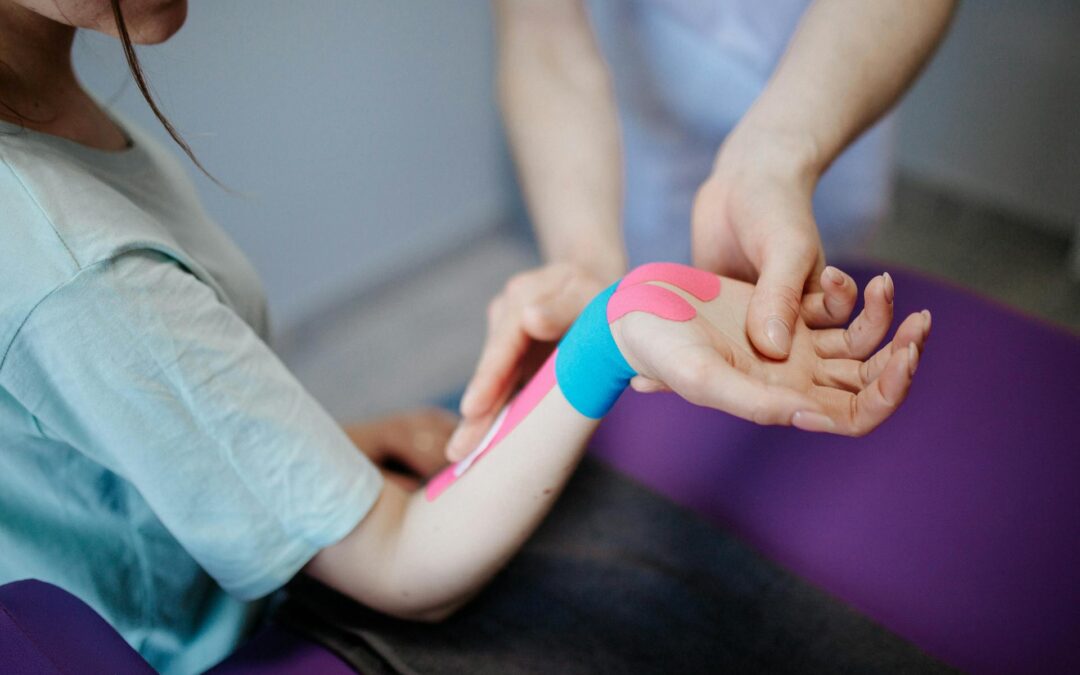If you’ve ever been to physical therapy for pain, inflammation, or an injury that just won’t heal, you may have heard about iontophoresis. It’s not as well-known as exercises, massage, or manual therapy, but for certain conditions, it can be incredibly effective. So, what exactly is iontophoresis, how does it work, and why do physical therapists use it? Let’s break it down.
How Iontophoresis Works
Iontophoresis is a technique that uses a mild electrical current to deliver medication through the skin and into the tissues beneath it. Instead of taking a pill or getting an injection, this method allows the medication to be absorbed directly at the source of pain or inflammation.
During treatment, an electrode pad soaked with medication is placed on the skin over the affected area. A second electrode is placed nearby, and a low-level electrical current is applied. This gentle current helps push the medication through the skin and into the underlying muscles, tendons, or joints, targeting the problem directly.
Why Not Just Take a Pill or Use a Cream?
A common question is why someone would go through this process instead of simply taking medication by mouth or applying a topical cream. The answer comes down to precision and effectiveness.
When you take a pill, the medication must pass through your digestive system and enter your bloodstream before reaching the affected area. This not only takes time, but it also means the drug is absorbed throughout your body—including places where it’s not needed. That can lead to side effects like stomach irritation or drowsiness.
Topical creams can sometimes be helpful, but they don’t always penetrate deeply enough to reach muscles, tendons, or joints. Iontophoresis allows physical therapists to bypass both of these issues by delivering the medication directly where it’s needed, without unnecessary side effects.
Conditions Treated with Iontophoresis
Physical therapists most often use iontophoresis to treat conditions that involve inflammation, pain, or swelling. One of the most common uses is for tendonitis—issues like rotator cuff tendonitis, Achilles tendonitis, or tennis elbow. These conditions involve irritation and inflammation of tendons, and iontophoresis can help reduce swelling and promote healing.
It is also frequently used for bursitis, a condition where fluid-filled sacs (bursae) become inflamed, leading to pain and restricted movement. Plantar fasciitis, a painful condition affecting the bottom of the foot, can also benefit from iontophoresis, as reducing inflammation in the plantar fascia can make walking more comfortable.
For patients with calcific tendonitis—a condition where calcium deposits form in the tendons, often in the shoulder—iontophoresis with acetic acid can help break down the calcium and improve mobility. This can be a helpful alternative for people trying to avoid more invasive treatments like injections or surgery.
What Medications Are Used?
The type of medication used depends on the condition being treated. One of the most common drugs used is dexamethasone, a corticosteroid that reduces inflammation and swelling. This is particularly effective for tendonitis and bursitis, as it can help ease pain and restore movement.
Another commonly used medication is lidocaine, which has numbing properties and can help provide temporary pain relief. In cases where scar tissue is limiting movement, saline may be used to help soften and break down the adhesions. Acetic acid is sometimes applied for conditions involving calcium buildup, as it can help dissolve deposits over time.
A major advantage of iontophoresis is that since the medication is delivered directly to the affected area, lower doses can be used compared to oral medication. This reduces the risk of side effects while still providing relief.
What Does Iontophoresis Feel Like?
Most people describe iontophoresis as a tingling or mild prickling sensation. The electrical current used is very low, so the treatment shouldn’t be painful. Some patients with sensitive skin might experience slight irritation or redness after the session, but this usually fades quickly.
Each treatment session typically lasts between 10 and 20 minutes, and multiple sessions may be needed to achieve the best results. Physical therapists will often combine iontophoresis with other treatments, like stretching and strengthening exercises, to maximize healing.
Does Iontophoresis Really Work?
Like any treatment, iontophoresis isn’t a magic cure, but research and clinical experience show that it can be highly effective—especially when used as part of a broader rehabilitation plan. Many patients report noticeable improvements in pain and mobility after just a few sessions.
However, iontophoresis isn’t for everyone. It’s not recommended for people with pacemakers, metal implants, or certain skin conditions. It also works best for treating inflammation in soft tissues rather than deep joint problems, where injections may be more effective.
Physical therapists use iontophoresis because it’s a safe, non-invasive way to deliver medication directly to the areas that need it most. For patients dealing with stubborn inflammation, pain, or conditions like tendonitis and bursitis, it can be an excellent alternative to oral medications or injections.
If your physical therapist recommends iontophoresis, it’s worth considering—especially if other treatments haven’t provided the relief you need. It’s painless, precise, and can be a valuable tool in the recovery process.

